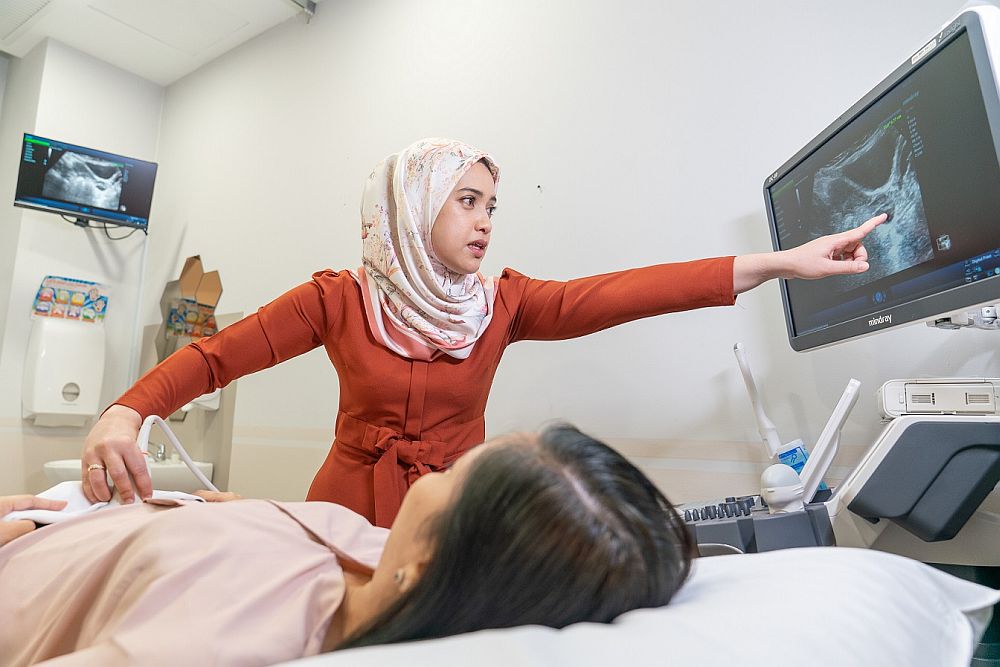KUALA LUMPUR, Jan 7 – When a mother is expecting a baby, the health of both is of utmost priority. However, there are situations that can put both at risk. This includes a lesser-known condition such as preeclampsia, and its even rarer progression, eclampsia.
As shared by Sunway Medical Centre Velocity (SMCV) consultant obstetrician and gynaecologist, Dr Nor Elyana Noordin, preeclampsia is a pregnancy complication characterised by high blood pressure and signs of damage to another organ system, most often the kidneys where it leaks protein (proteinuria).
This is caused by the abnormal formation of blood vessels in the placenta and the mother’s blood vessels. What causes the abnormalities, however, remains unknown.
“Eclampsia is the onset of fits or seizures in pregnant women and is a severe complication of preeclampsia. Preeclampsia mostly occurs during the antenatal period, more so in the third trimester. 80 per cent of eclamptic fits occur during the delivery process, or within the first 48 hours following delivery. Statistically speaking, the prevalence of preeclampsia and eclampsia is 4.6 per cent and 0.3 per cent respectively,” Dr Elyana elaborated.
In Malaysia, eclampsia made up 6 per cent of maternal deaths in 2020, taking the fourth spot along with ectopic pregnancy, and ranked after obstetric embolism, postpartum haemorrhage and gestational hypertension with significant proteinuria.
Warning Signs Of Preeclampsia
According to Dr Elyana, eclampsia can be prevented with proper treatments administered at the right time, and regular check-ups, since there are signs and clinical parameters that can help predict severe preeclampsia.
“Pregnant ladies with preeclampsia have to be monitored closely through regular blood pressure monitoring, serial blood investigations and urine protein tests to ensure the wellbeing of both mother and baby. If the blood pressure is uncontrolled even with optimal medications, or there are abnormal blood parameters, the baby has to be delivered so that preeclampsia does not worsen and progress to eclampsia,” she said.
Although preeclampsia sometimes develops without any symptoms, incidences of high blood pressure should be picked up during antenatal check-ups. Other signs that may present itself during severe preeclampsia are severe headaches, vision problems, pain below the ribs, severe nausea and vomiting, sudden weight gain and swelling (oedema) in the face and hands.
Who Is More Susceptible To Developing Preeclampsia?
Having diabetes, high blood pressure or kidney disease before becoming pregnant can increase one’s risk of developing preeclampsia, as well as having conditions such as lupus or antiphospholipid syndrome.
Other instances that can slightly increase the chances of preeclampsia include first time pregnancy, family history of the condition, being over 40 years old, having a 10-year gap from the last pregnancy, expecting multiple babies (twins or triplets) or a Body Mass Index (BMI) of 35 or over.
Dr Wong Yen Shi, consultant obstetrician and gynaecologist at SMCV said that there is a 15 per cent chance of a woman developing preeclampsia in her second pregnancy if she experienced it in her first. She explained that there are lifestyle factors that can help reduce the chances of preeclampsia.
“It is important to ensure that the blood pressure is under control prior to embarking on a pregnancy journey for ladies with underlying hypertension. Aspirin is used to prevent or delay onset of preeclampsia. Exercising and well-balanced diet is important for general well-being but it does not prevent preeclampsia,” she shared.
How Are Preeclampsia And Eclampsia Treated?
Dr Wong explains that the most effective treatment of preeclampsia would be delivery, but if it is pre-term, management of the condition includes antihypertensive medications, blood or urine tests and regular follow-ups to monitor both the mother and fetus’ condition.
“If the pregnancy has reached 37 weeks or more, the delivery may be warranted via induction of labour or caesarean section. For mothers who have not reached 37 weeks but have developed the preeclampsia complications, they would need immediate delivery. Delivery of the fetus and placenta is the only definitive treatment of eclampsia. Other than that, magnesium sulphate is a type of drug that is also used to prevent and treat eclampsia,” she said.
What Are Its Effects On The Baby’s Development?
With the condition originating from the placenta, preeclampsia may prevent the baby from obtaining sufficient blood supply. As a result, the baby may be smaller in size as it does not grow at a normal rate inside the womb, also known as fetal growth restriction.
“Preeclampsia and its complications increase the likelihood of preterm delivery. The complications that follow preterm deliveries may include cerebral palsy (irreversible movement disorder), learning disabilities, feeding or gut problems, as well as visual or hearing impairment,” Dr Wong added.
While every pregnancy and delivery for each mother is different, the best way to prevent complications from preeclampsia, and subsequently eclampsia is early diagnosis. Prenatal and post-natal care is key. Patients must go for consistent check-ups and share any new symptoms that may arise so that it can be managed quickly for a safe delivery.
Sunway Medical Centre Velocity is located at Lingkaran SV, Sunway Velocity. For enquiries, please contact 03-9772 9191 or email [email protected]. For more information on Sunway Medical Centre Velocity, visit www.sunmedvelocity.com.my (Facebook: Sunway Medical Velocity).








